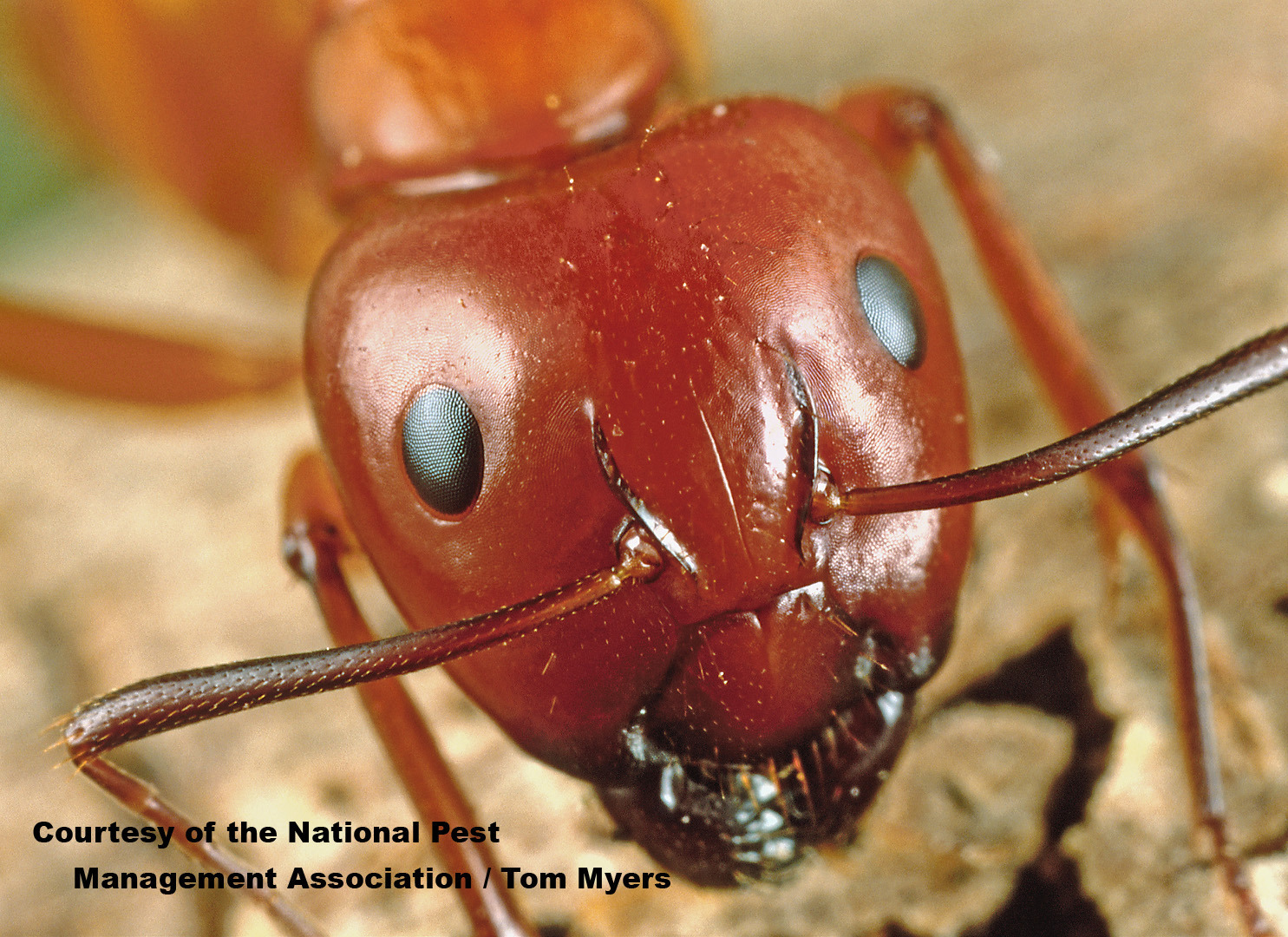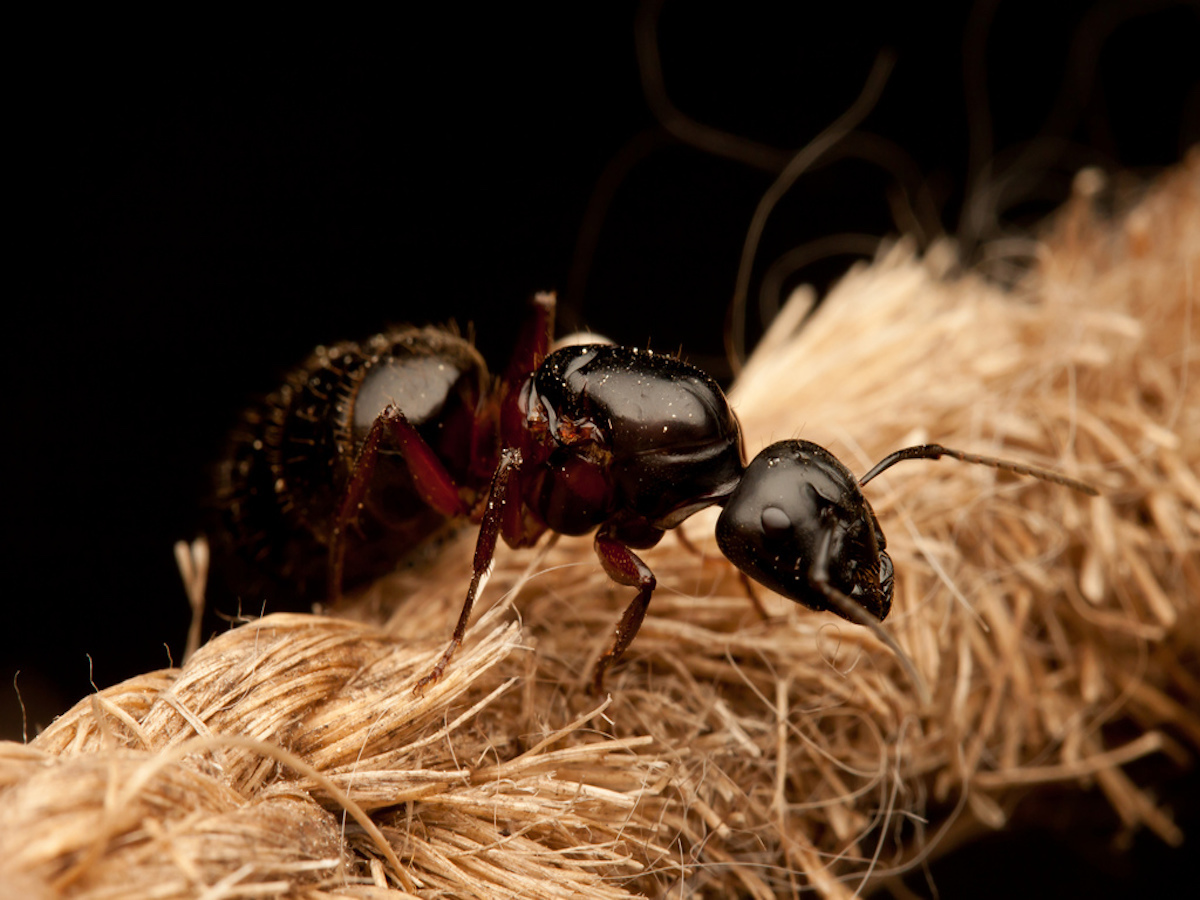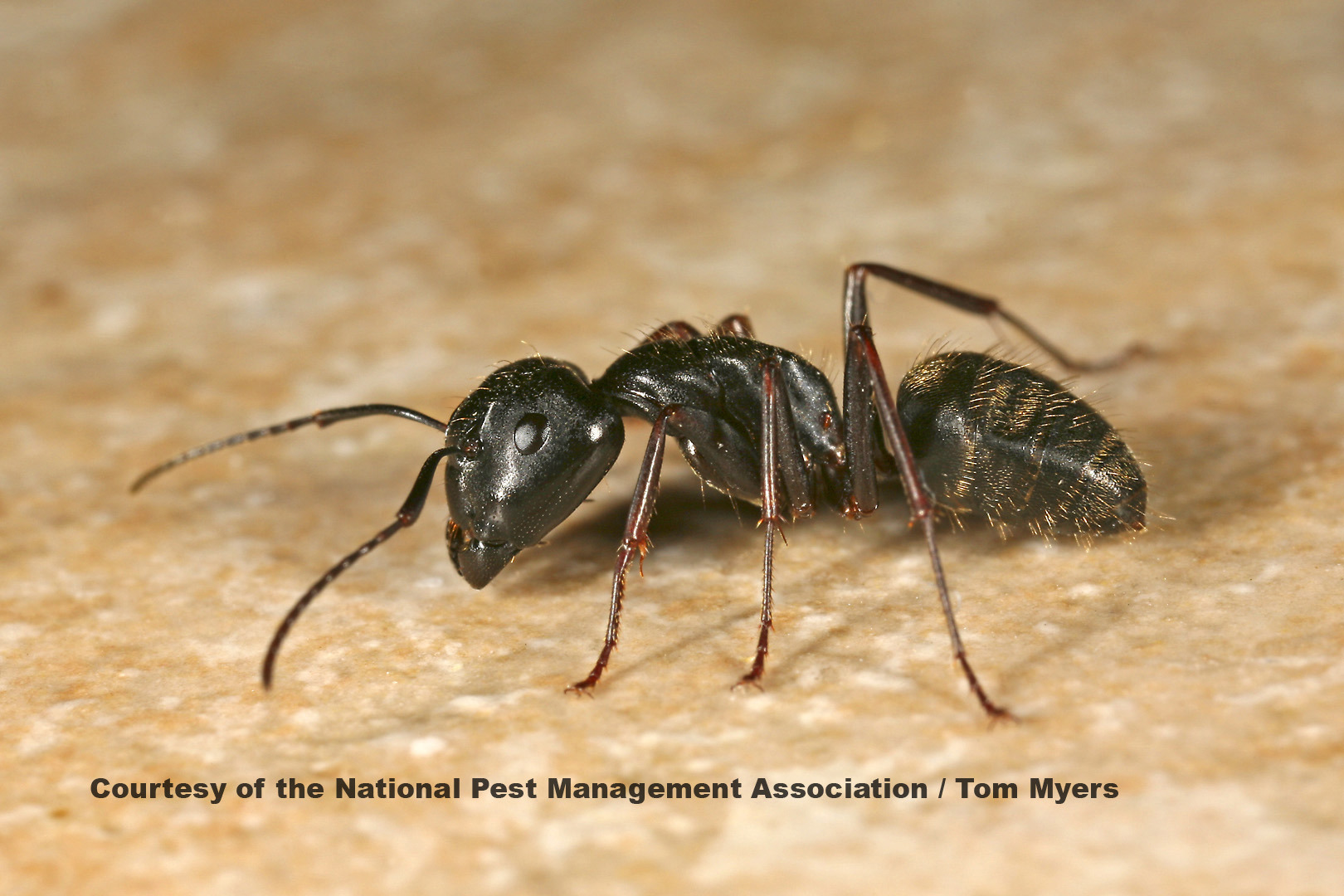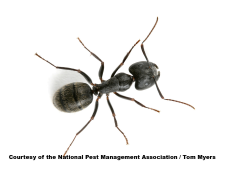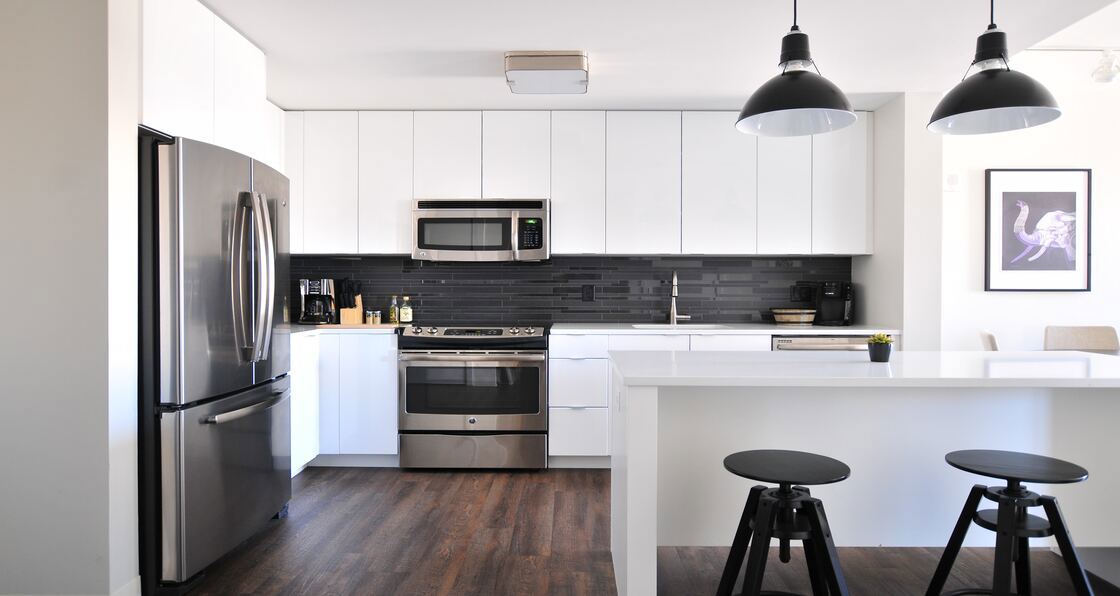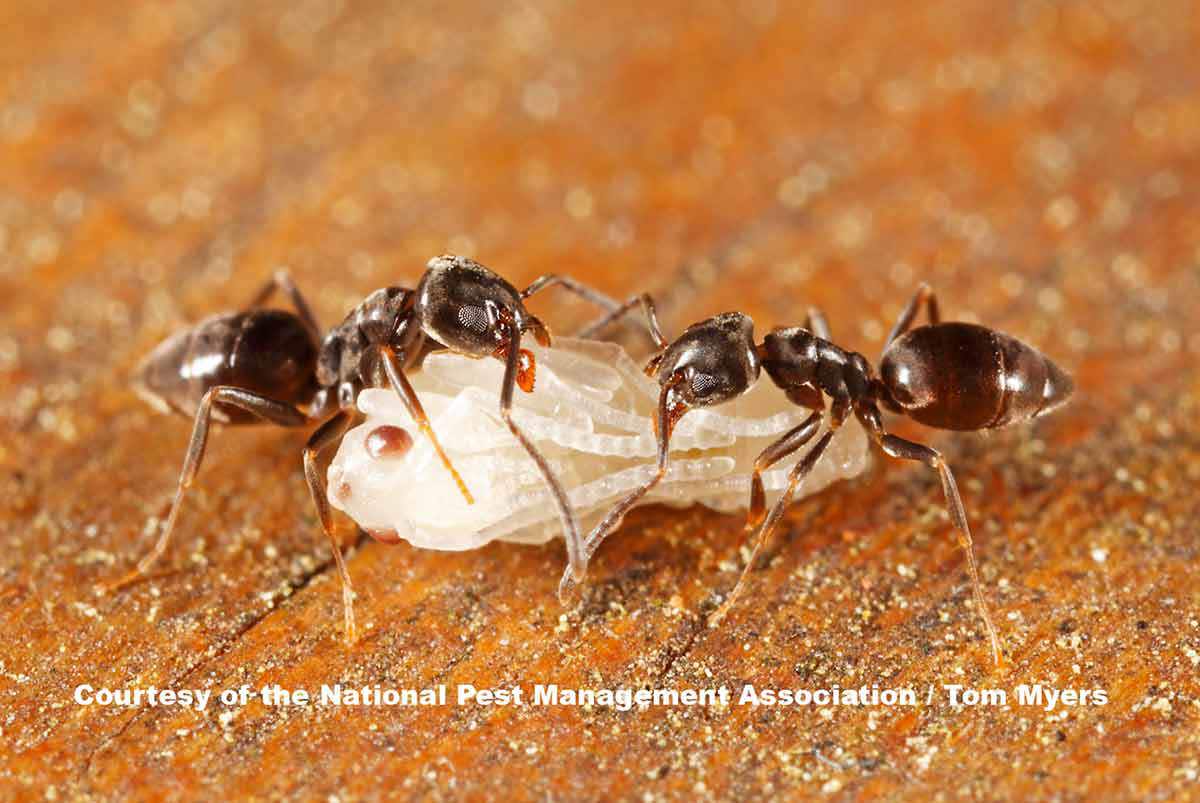Carpenter Ants Camponotus species
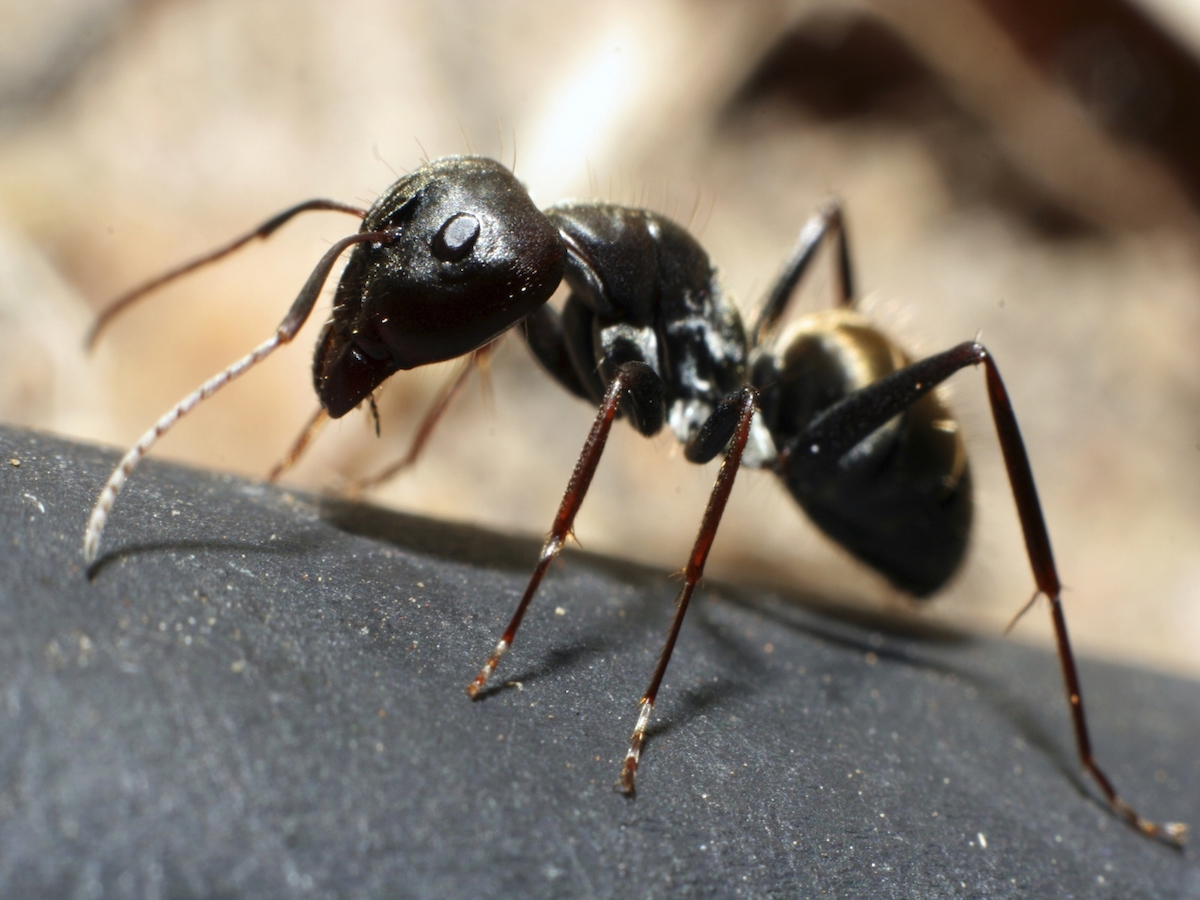
Carpenter Ant Identification
Color: Usually red, black or a combination
Size: 5/8"
Legs: 6
Antennae: Yes
Shape: Segmented; oval
Region: Throughout U.S., most common in the North
What is a Carpenter Ant?
Carpenter ants are a species of ant that get their name from the way they build nests, because they excavate wood and form smooth tunnels inside of the wood. They do not eat wood, they only tunnel and chew through it to create nests. Piles of fine sawdust are a clear sign of carpenter ants in the house and a likely need for carpenter ant extermination.
What Do Carpenter Ants Look Like?
Carpenter ants vary in size and can be anywhere from ½” to ⅝” long. While black carpenter ants are common, you may also find a combination of black and red, red, or brown.
What are Signs of Carpenter Ants in the House?
The first appearance of winged males in a home often causes homeowners great concern, as it signifies that ants are living inside the house. The presence of a carpenter ant nest is sometimes indicated by a rustling sound that will come from wall voids or from wood where the nest is located when the winged forms are disturbed. If you see one ant, it likely signals you may have an infestation.
Carpenter ants require a water source to survive. They also like to build nests in stacks of wood and sometimes use branches to get into the home. Some ways you can prevent carpenter ants in the house include:
- Eliminate sources of moisture or standing water.
- Keep tree branches and other plants cut back from the house.
- Seal all cracks or little openings around the bottom of doors or around windows with a silicone-based caulk.
- Keep firewood and building materials stored away from the home.
The main signs of a carpenter ant infestation in the house are small openings on the surface of wood. Through these openings, the ants expel debris, which consists of sawdust-like shavings and/or fragments of insulation and/or insect body parts. The accumulation of this debris below the holes is a good indication of an active infestation. The gallery walls that carpenter ants create are smooth, with a sand-papered appearance. Active galleries are kept clean of debris.
If you find these signs, contact a pest control professional about carpenter ant extermination immediately. They can cause serious damage to your home if not appropriately dealt with.
Carpenter ants can bite and have powerful jaws, so their bites can be painful. They may also inject formic acid into the bite wound, creating a burning sensation. However, this pain will subside and does not pose a significant health threat.
Carpenter ants can emit formic acid as a defense against other arthropods, but it poses no danger to humans. People who disturb carpenter ant nests or handle them may detect an odor akin to vinegar, which is acetic acid and has a similar smell.
If you’ve been bitten by a carpenter ant, and the pinch has broken the skin, immediately clean the wound with soap and water, apply antibiotic ointment, and bandage the wound to prevent infection. Even though carpenter ant bites are very uncommon, its best to contact a pest control professional if you see them, since they can cause serious damage to structures.
Carpenter Ants usually come into buildings through cracks around doors, windows, or through plumbing and electrical penetrations in the home. They will also crawl along overhead wires, shrubs, or tree limbs outdoors that touch the building above ground, then enter the home through any small opening.
Carpenter ants feed primarily on insect honeydew, plant and fruit juices, insects and other arthropods. Inside, they will also feed on sweets, eggs, meats, cakes and grease. The workers will forage up to 300 feet from their nest. Although some workers are active during the day, most activity occurs from shortly before dusk until dawn.
The reason sawdust is a clear sign of carpenter ants in the house is because they do not actually eat the wood. They only dig holes in the wood to make their nests.
Most species of carpenter ants attack wood that is or has been wet and damaged by mold. They prefer to attack wood softened by fungus, which is often associated with moisture problems, so homeowners should keep an eye out for excess moisture and soft, rotting wood around the home. Even though they first invade wet, decayed wood, they may later begin excavating tunnels through dry, undamaged wood.
The western black carpenter ant colony, when mature, contains about 10-20,000 workers, with large colonies of more than 50,000 individuals. There is usually only one functional, wingless queen per colony. Swarmers are not produced until the colony is more than two years old. They are produced in the previous year and held over the winter in the nest for release the following year. Swarmers appear from May until August in the eastern United States and from February through June in the west.
Carpenter ants build their nests outdoors in various wood sources. This can include:
- Tree stumps
- Rotting fence posts
- Old firewood
- Under stones
The parent colony, or main colony, is typically located outside and contains the queen, eggs and young. Satellite nests can occur and branch out from the main parent colony, and they only contain workers, mature larvae, and pupae. Satellite nests are formed in mid-summer both indoors and outdoors and do not form until the parent colony matures over several years. Usually around August, the workers and winged ants will emerge from the pupae.
Carpenter ants will begin mating flights in a process called swarming. Winged males are typically the first to emerge when environmental conditions like temperature and extended daylight signify that it’s time to swarm. If conditions are right, the male releases a pheromone that stimulates the female to leave her nest.
If an infestation is suspected and you need to know how to get rid of carpenter ants, it’s always best to contact a licensed pest control professional who can assess the situation and recommend a method of carpenter ant extermination. Since colonies can include more than 50,000 ants, it’s best to leave this to the experts.
Not only are these big ants an annoyance, they can also cause serious damage to your home. If you’re concerned about an infestation, the best course of action is to hire a licensed pest control professional who can help locate the nest and create a plan to keep these pests out of your home. This helpful zip code search is an easy way to find a quality pest control professional, also known as carpenter ant exterminator, near you. You can start by entering your zip code in the field below.
If you suspect a carpenter ant infestation in your home, the best course of action is to contact a licensed pest control professional. They will conduct a thorough inspection to identify the full extent of the problem. Once the situation is properly identified, the appropriate control measures can be taken.
You can find a certified pest professional near you with the helpful zip code search below.

